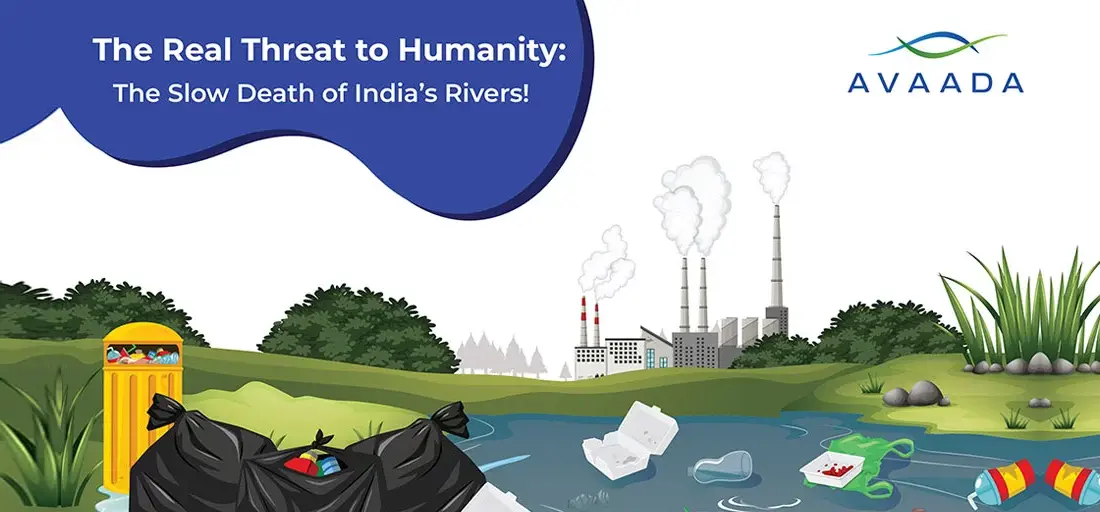The world is undergoing a remarkable transformation in its pursuit of sustainable energy, and at the forefront of this revolution stands wind energy. As we move towards a future that prioritizes environmental consciousness, wind energy emerges as a vital player in reshaping our power sector.
Wind energy, though now associated with high-tech turbines, finds its roots in the distant past. Early humans harnessed the wind’s energy for their seafaring pursuits, setting the stage for centuries of innovation. Over time, windmills evolved from basic structures into sophisticated devices with propeller-type blades, enabling tasks like pumping water and grinding grains.
This blog delves into the intricacies of wind energy and how it works.
How does wind energy work?
Renewable energy has become an imperative in today’s world, with a pressing need for sustainable solutions. Among these, wind energy stands out as a frontrunner with immense untapped potential. The idea of harnessing the power of the wind to not only fuel our buildings but also meet our critical electricity demands was once a distant concept, yet it has evolved into a remarkable reality. But the question is how does wind energy works.
Wind turbines, the heart of wind energy generation, capture the kinetic energy of the wind using blade technology. As the wind flows over the blades, it induces lift—much like the principle behind airplane wings—causing the blades to rotate. This rotation is then transmitted to a drive shaft connected to an electric generator, which converts this mechanical energy into electricity.
Characteristics of wind power
As we delve into the intricacies of this clean and sustainable energy source, let’s delve into the defining features that set wind energy apart.
Abundance & Renewability:
Wind currents, driven by solar energy and Earth’s rotation, provide an endless energy source.
Clean & Green:
Wind power emits minimal pollutants, curbing carbon emissions and bolstering environmental health.
Localized Potential:
Wind projects can tap into region-specific wind patterns, maximizing energy production.
Scalability:
Wind energy scales from small home setups to vast utility-scale farms, adapting to energy needs.
Cost Efficiency:
Low operating costs and steady maintenance make wind energy a cost-effective option.
Energy Security:
Reduces reliance on imported fuels, ensuring stability and independence.
Job Creation:
The wind sector fosters employment, benefiting various skill levels and boosting economies. For instance, wind projects contribute an estimated $1.9 billion in state and local tax payments and land-lease payments each year.
Water Efficiency:
Unlike many methods, wind energy consumes minimal water, vital in water-scarce areas.
Hybrid Integration:
Wind energy complements solar and pumped storage hydropower for a consistent energy supply.
Tech Advancements:
Ongoing innovation enhances efficiency, capturing more energy and bolstering reliability.
Data Snapshot:
- Wind energy contributed about 10.2% of total U.S. utility-scale electricity generation in 2022.
- Wind power helps avoid approximately 329 million metric tons of CO2 emissions annually, equivalent to 71 million cars’ emissions.
Why wind energy is important?
Clean Source of Energy:
A clean and renewable energy source is wind power. Wind turbines use the mechanical energy of the wind to turn a generator and produce electricity. In addition to being a plentiful and limitless resource, wind also generates power without consuming any fuel or polluting the environment. The main renewable energy source in the United States is still wind, which aids in lowering our dependency on fossil fuels. Annually, wind energy helps save 329 million metric tonnes of carbon dioxide emissions, which is the same amount of emissions produced by 71 million cars and contributes to acid rain, pollution, and greenhouse gas emissions.
Beneficial to Local Communities:
Local communities gain from wind energy. Each year, land leasing payments and state and local tax payments from wind farms are anticipated to total $1.9 billion. Communities that invest in wind energy can utilize the extra money to fund local infrastructure projects, lower homeowner taxes, and fund school budgets.
Economical Solution:
One of the most affordable energy sources currently accessible is generated by utility-scale, land-based wind turbines. Additionally, as wind energy research and technology evolve, its cost-competitiveness continues to rise.
Suitable for Different Settings:
In functioning landscapes with many uses including agriculture, wind energy generation works effectively. In rural or isolated places, such as farms and ranches or coastal and island villages, where high-quality wind resources are frequently found, wind energy is simple to integrate.
What Are the Parts of a Wind Turbine?
A wind turbine’s functionality hinges on five major components, complemented by various auxiliary parts. We have already discussed how wind power works. Let’s delve into the core elements that are pivotal for forming the turbine’s operational backbone.
1. Tower:
The tower, often cylindrical and constructed from tubular steel, varies in height (75–110 m) based on turbine size and location. Tower height aligns with blade diameter to optimize wind exposure. Taller towers catch higher-speed winds due to the increased elevation.
2. Rotor:
The rotor, the turbine’s moving part, comprises primarily three blades attached to a central hub. While turbines can feature different blade counts, three-blade rotors are renowned for superior efficiency. Blades, crafted from lightweight yet robust composite materials, adopt an aerodynamic airfoil shape with twists for optimal performance. Blades can pivot up to 90°, adjusting the pitch to maximize wind capture.
3. Hub:
The hub secures blades and enables their rotation within the turbine structure.
4. Nacelle:
The nacelle, situated atop the tower, houses a complex array of components vital to the turbine’s operation. This intricate electromechanical system includes a generator, turbine shaft, and gearbox. The gearbox elevates shaft speed, optimizing compatibility with the generator, housed within the nacelle.
5. Generator:
The generator is integral, converting the rotor’s mechanical energy from wind into electrical power. Its design mirrors that of an electric motor, operating within a three-phase alternating current system.
In summary, a wind turbine’s orchestration depends on these interdependent elements, each playing a crucial role in harnessing the wind’s kinetic energy and transforming it into sustainable electricity.
Types of Wind Energy
Utility-Scale Wind:
This category encompasses wind turbines ranging from 100 kilowatts to several megawatts in size. These turbines are integrated into the power grid and deliver electricity to end users through electric utilities or power operators.
Offshore Wind:
Wind turbines erected in expansive bodies of water define offshore wind energy. Larger than their onshore counterparts, these turbines capitalize on their size for enhanced efficiency and higher power generation.
Distributed or “Small” Wind:
This classification pertains to wind turbines with capacities below 100 kilowatts. These turbines are utilized to directly power homes, farms, or small businesses that operate independently of the grid.
How are Wind Energy Farms Constructed?
Wind energy farms, symbolizing the union of innovation and nature’s bounty, are meticulously crafted to harness the potent force of wind and convert it into clean electricity. Let’s delve into the construction process of these transformative installations.
1. Site Selection and Assessment
The journey begins with site selection. Wind farms are strategically situated in regions with consistent and strong wind patterns. Advanced technologies such as wind resource assessments and computer modeling aid in identifying optimal locations for maximum energy yield.
2. Planning and Permits
Once a suitable site is pinpointed, meticulous planning ensues. Environmental impact assessments, permitting procedures, and community consultations are conducted to ensure compliance with regulations and minimize ecological disruption.
3. Infrastructure Development
Infrastructure forms the backbone of a wind farm. Access roads, transmission lines, and substation facilities are developed to support the farm’s operations and connect it to the electrical grid.
4. Tower Erection
The colossal towers, typically constructed from steel, rise from the ground. Cranes and specialized equipment are employed to carefully lift and assemble tower sections, securing them firmly into the earth.
5. Rotor Installation
The heart of the wind turbine, the rotor, is meticulously assembled. Each blade is attached to the hub, forming the rotor assembly. Cranes again play a vital role in lifting and connecting these components atop the tower.
6. Nacelle Placement
The nacelle, housing the turbine’s intricate machinery, is hoisted and installed atop the tower. This operation demands precision and engineering finesse to ensure seamless integration.
7. Generator and Electrical Systems
Within the nacelle, the generator and electrical systems are meticulously connected. Advanced control mechanisms are incorporated to optimize energy capture and transmission.
8. Testing and Commissioning
Before joining the grid, each turbine undergoes rigorous testing and commissioning. Technicians fine-tune the turbine’s operation, ensuring optimal performance and safety.
9. Grid Connection
The electricity generated by the turbines is transmitted to the electrical grid via substation connections and transmission lines. Wind farms become integral components of the broader energy infrastructure.
10. Ongoing Maintenance
Once operational, wind farms require consistent maintenance to ensure peak efficiency. Regular inspections, component replacements, and upkeep activities are essential for their smooth functioning.
Avaada Group’s drive Towards Renewable Energy Transition
Avaada has consistently been persistent in driving renewable energy trasition. The company had previously completed a 126 MW wind project in Rajasthan’s Pratapgarh area.
The project will produce 290 million clean energy units and reduce annual carbon emissions by 2,11,922 tones.
Frequently Asked Questions
Is wind energy found everywhere?
Wind currents span the globe, allowing wind turbines to be economically installed in diverse locations. This makes wind energy a pivotal resource, particularly in developing economies. In contrast, energy sources like nuclear demand substantial expertise and significant initial investments.
Who uses wind power?
Wind power serves a range of beneficiaries, including homeowners, farmers, businesses, and industries. These entities leverage clean and distributed wind energy to pump water, reduce electric bills, and combat air pollution. The evolution of distributed wind turbines continually enhances their strength, affordability, resilience, and efficiency, further enriching their usability. As the world strides towards sustainability, wind energy stands as a beacon of promise, offering diverse avenues for cleaner and more efficient power generation.








